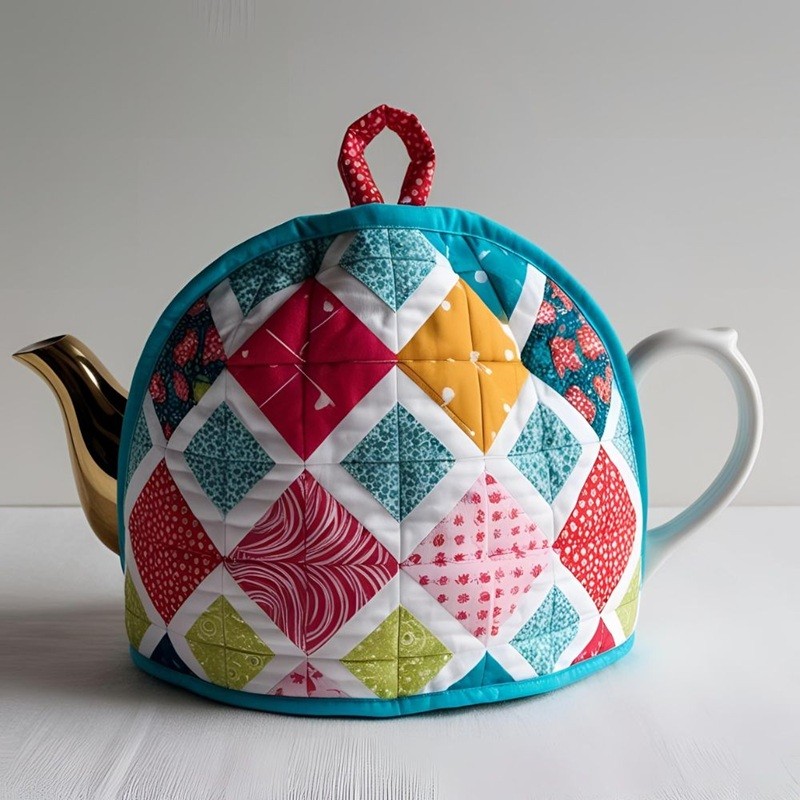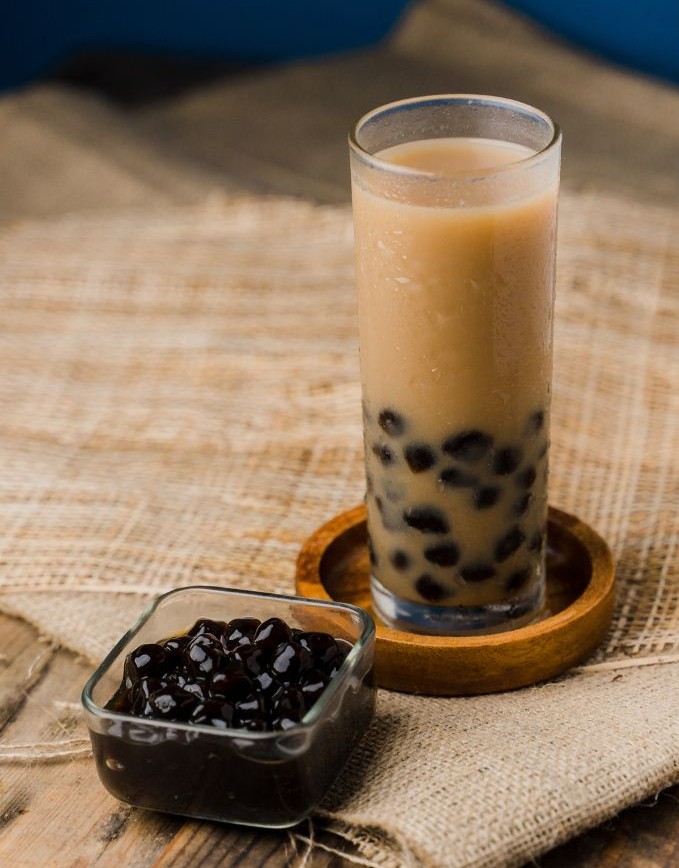Comfrey Tea
-
The Mending Herb
Comfrey tea is a traditional herbal medicine used by people when they have taken a bad fall. This healing herb may be the ideal remedy to mend and soothe your aches and pains.
This gorgeous plant makes a popular herbal infusion, long used to treat a number of ailments. Over time, however, studies have found that care should be taken to properly use this tea.
Come and learn all about how you can make the most out of this amazing plant.
What is Comfrey?
Comfrey, symphytum officinale in Latin, is a perennial herb native to marshy and damp places in Europe and Asia, such as river banks and ditches. Today it is found growing in temperate climates of western Asia, Europe, North America and even Australia.
The name "comfrey" comes from the Latin, meaning "to grow/knit together" and its genus name symphytum means "to heal together" in Greek, both referring to its ability to speedily repair and strengthen bones and tissues.
This is why you are likely to find it by its common names: knitbone, boneset, woundwort or bruisewort. Other common names for comfrey include: vegetable milk of Russia, slippery root, healing herb, salsify, and gum plant.
Comfrey is a perennial herb of about 60cm to 100cm in height that grows in moist places. It has thick long black roots that take hold quickly, and a straight hollow hairy stem supporting large heavy broad leaves, which are also hairy and prickly.
It blooms lovely small bell-shaped flowers that come in various colors, such as white, cream, pink or even a vibrant purple.
This is a fast growing plant with plenty of leaves; however care should be taken when harvesting the upper ground parts of the plant as the hairs may irritate the skin. The best time to prune comfrey leaves is in the spring and summer, but it is best to use gloves.
If you are planning to grow this herb for personal use, remember to make sure to get it from a reputable source. Getting comfrey in the wild may be dangerous as it is commonly mistaken with the deadly foxglove.
History of Comfrey
Since the times of Ancient Romans and Greeks, comfrey has been used by physicians as an ingredient for medicine, but it was used by the people in cosmetics, soap making, fabric dying, leather tanning and as a fertilizer.
Herbalist healers would recommend this tea for treating external injuries from fractures to cuts or burns. They would also recommend that patients take this tea internally to treat digestive problems such as heartburn and indigestion.
Today comfrey is still valued, but mainly as an external form of treatment, and in the world of cosmetics particularly in herbal shampoos. As an internal remedy, comfrey tea has been banned due to its potential side effects.
Comfrey tea is also the way gardeners commonly refer to the liquid organic fertilizer made with the leaves of this herb. It is a source of nourishment for other flowers and vegetables.
Benefits of Comfrey Tea
Comfrey is an herb rich in calcium and allantoin, two elements that encourage the rapid growth of cells and tissue repair.
It is also rich in a number of other components such as vitamins A, B1, B2, B3, B5, B6, B12, C and E, and minerals like chromium, cobalt, copper, iron, germanium, magnesium, manganese, phosphorus, potassium, sulfur and zinc. It contains proteins, mucilage, phytosterols, saponins, tannins and inulin.
All these components work together to make comfrey tea a potentially powerful healer.
External Use Only
Scarring Tea
- Comfrey tea may be used to help scar a cut or a wound. You have to make sure to clean the wound thoroughly prior to applying this herbal tea as you do not want the skin to close up trapping a bacterial infection. Although it acts as a disinfectant it is best not used directly on an open wound.
- If you accidently burn or scald yourself, you may also apply this herbal tea to your skin. Comfrey is rich in allantoin, an element that is said to speed up the recovery of damaged tissue by stimulating skin cell renewal.
- Comfrey tea may also soothe and treat rashes and insect bites, reducing the urge to scratch the itch. It is astringent, helping to compress blood vessels and pores on the skin, and as a form of pain relief and coolant. This may be good for skin abrasions, such as scraped knuckles or chapped lips.
Repairing Tea
- Comfrey tea is said to contain essential elements that speed up the healing of broken bones. Place a warm comfrey compress over the injured area and allow allantoin to be absorbed through the skin and promote the growth and replacement of cells in the fractured area.
- Not all falls result in broken bones, some cause painful sprains, dislocation or torn ligaments. Comfrey tea may also help in these situations. It is analgesic, soothing the pain while at the same time it may help to repair muscle or cartilage cells.
- Apply it over the swollen area to help bring it down, by reducing the underlying inflammation.
- This herbal infusion may also be a great help strengthen bones and teeth due to presence of calcium in the leaves used to make soothing compresses.
Reducing Inflammation
- Applying compresses of comfrey tea to painful arthritic joints may help bring down the inflammation and relieve, or at least reduce, joint pain. Consider using this herbal tea if you suffer from rheumatoid arthritis as well.
- Comfrey tea may soothe and help treat hernias as it is said to soothe the pain, clear away the inflammation as it repairs the torn or damage tissue. A warm compress applied to the affected area may be helpful with intervertebral disc lesions, sciatica, tendinitis and other similar ailments.
- There are other inflammatory situations where this tea may be advised such treating a congested prostate or conjunctivitis. Comfrey may be applied as an anti-fungal agent helping to treat cold sores, chicken pox blemishes and athlete s foot.
- It also helps to promote healthy blood circulation treating varicose veins.
Skin Rejuvenating Tea
- When using this tea on your skin, you may start to notice that your skin feeling smoother and healthier. Comfrey tea contains elements that help to moisturize and nourish your skin and thus fight premature aging. You may simply soak in a nice relaxing bath infused with this herb as it has calming effects.
- Comfrey tea may also be used other skin issues such as acne, boils, eczema or psoriasis. It helps to clear the skin of toxins allowing it to breathe better and speeding up recovery from various dermatological conditions.
- You may also find comfrey being used in hair products. This is because tis tea may be used as a hair rinse to soften it.
Internal Use
- Before using this tea internally, make sure to get the approval of your doctor. (See the Side Effects section below).
- The most common benefit associated with drinking this tea is helping the digestive system to function better. It is said to help control both diarrhea and constipation, and soothe general indigestion. There is also a claim that it may help you deal with stomach and intestinal ulcers.
- Drinking this tea may help you when you have a sore throat and need to expel mucous from your respiratory system that could be causing bronchial inflammation, pharyngitis or tonsillitis. It is said to calm spasms in the respiratory system, thus easing asthma attacks.
- The multitude of vitamins and minerals found in this tea are said to be a great help to those who need to lower bad cholesterol levels and keep blood sugar and blood pressure levels under control. The antioxidant effect of such a rich comfrey infusion may help lower the risk of heart disease.
Would you like try comfrey tea now?
Side Effects of Comfrey Tea
Comfrey tea may be a great healer, but you should take care to use it properly in order to avoid experiencing any serious harm to your health.
Side Effects of Internal Use
It is rare that a doctor or nutritionist should recommend ingesting this tea. This is because the potential benefits could be easily outweighed by the serious side effects of drinking this herbal tea.
- Comfrey contains a substance called pyrrolizidine alkaloids that is considered toxic for the liver. Serious damage to the liver could even when drinking small amounts of this tea. There are some claims that it may even lead to the appearance of cancer.
- Although a lot more studies still need to be performed on the safety of this herb, there seems to be evidence that the highest concentration of toxic elements is in the roots as opposed to young leaves.
- So if you insist on drinking this tea, do it for a short period of time in small dosages and with the supervision of your doctor.
Do Not Use Comfrey Tea
- If you are pregnant or breastfeeding then it is best not to drink or use any form of comfrey tea. There simply are not enough studies to rule out the possibility of harm either to you, your fetus or your baby.
- Although some may recommend this herbal tea to create a soothing herbal bath for kids, if your child is not yet 5 years old then it is best to use another herb or product, as comfrey may be too strong for the child s delicate skin.
- Are taking any prescription medication? Then it s best to avoid this tea as it may interact with the medication in ways not yet studied.
- If you suffer from liver disease or tend to put stress on your liver due to alcohol drinking or smoking, then you are more likely to suffer from the severe side effects comfrey has on the liver. It is best to avoid this tea and search for an alternate remedy.
Side Effects of Improper External Use
- Even when using comfrey tea just externally, you should still take some care to use it properly. For example, be careful when handling the leaves of this plant as they have hairs that can irritate the skin.
- Comfrey is known for its ability to quickly mend skin tissue; this is why you should be very careful when applying it to deep wounds. The wound must be properly cleaned and have enough time to heal before the skin closes up.
- It is best to apply around the affected area, reducing the risk of dangerous chemicals entering the blood stream and causing as much damage as if you has ingested it.
Brewing Comfrey Tea
Are you ready to brew this healing tea?
Let s put the kettle on and learn how to make comfrey tea.
Quantity: 2cups (approx. 500ml)
Water temperature: boiling (100 C)
Steeping time: 10 minutes
Dosage: 10 minute-soak, for short periods of time
The whole comfrey plant is considered beneficial, but the best parts you can use to make a healing pot of tea are the leaves and the roots. You can use either fresh or dried plant material, you only need to pay attention to the proportions.
Let s start making this tea:
- Begin by bringing water to a boil. In this recipe you will need about 2 cups of water, which is approximately 500ml.
- If you are using dry comfrey, then you will need about 2 teaspoons of plant material. When using fresh, it is about 1/4 cup.
- Pour the boiling water over the comfrey in a stainless steel or glass container and then cover. Allow the tea to steep for about 10 minutes. Alternatively, you can boil the water with the comfrey in the same pot for 5 minutes. The longer you wait with either process, the stronger your tea will.
- Strain the material and use the tea to soak a sterilized cloth and apply it where needed. Leave it on for about 10 minutes before soaking the cloth again. If you think there is risk of infection, change the cloth when applying a new compress.
- Remember that this is a tea to be applied only when needed and then also for short periods of time. Seek advice on what the best timeframe is for your particular injury or ailment. When there are fractures or sprains involved, it is essential to go to a doctor.
Additional Tips
- Make a soothing and healing herbal bath by blending comfrey with chamomile and lavender. Both these herbs will help you relax and fill your bathroom with wonderfully fragrant floral perfumes.
- If you wish to treat your plant with this nutritious brew, then there are other recipes for comfrey tea that are best suited for plants. You will notice that it is common to refer to the fertilizer as comfrey tea, so make sure when using the correct recipe.
This is a great example that not all teas need to be ingested to be useful and healthy for you. So next time you take a tumble, remember to prepare a compress of comfrey tea!
Mend you wounds with this tea!
Return from Comfrey Tea to Herbal Teas
Return to The Right Tea Homepage
”While there's tea there's hope.” - Sir Arthur Wing Pinero (1855-1934), British actor

Do you have a question? Then feel free to Contact Us!
And don’t forget to follow us on Facebook to receive updates, photos and interesting tips and news! Follow us also on Pinterest!
Search Website:
Be healthy
with a wide
choice of herbs!

Prepare your tea!
Try these
Tea Samplers!

Wellness Pack at ArtofTea.com

Award Winning Pack ar ArtofTea.com
Find other
tea time items at ...










